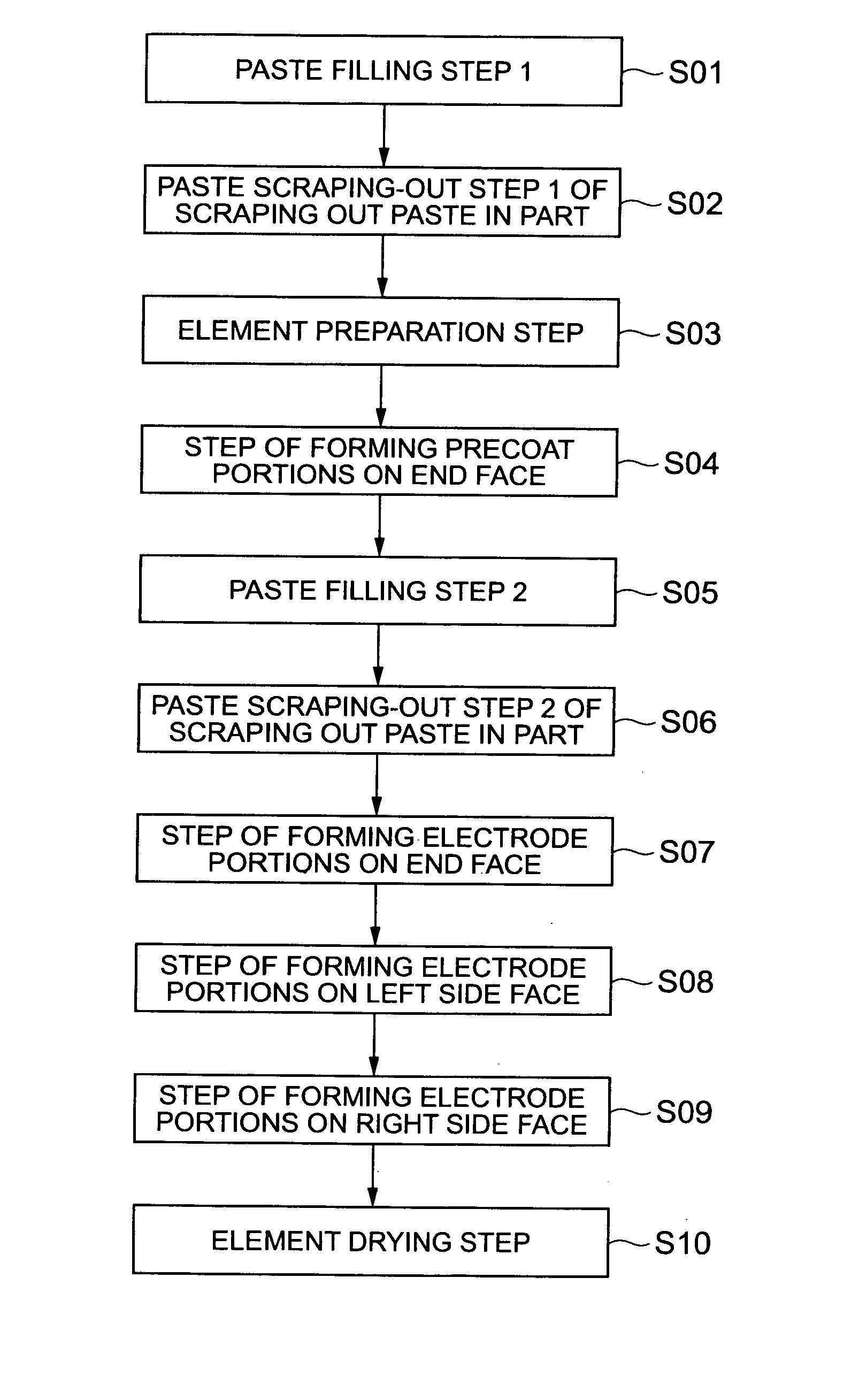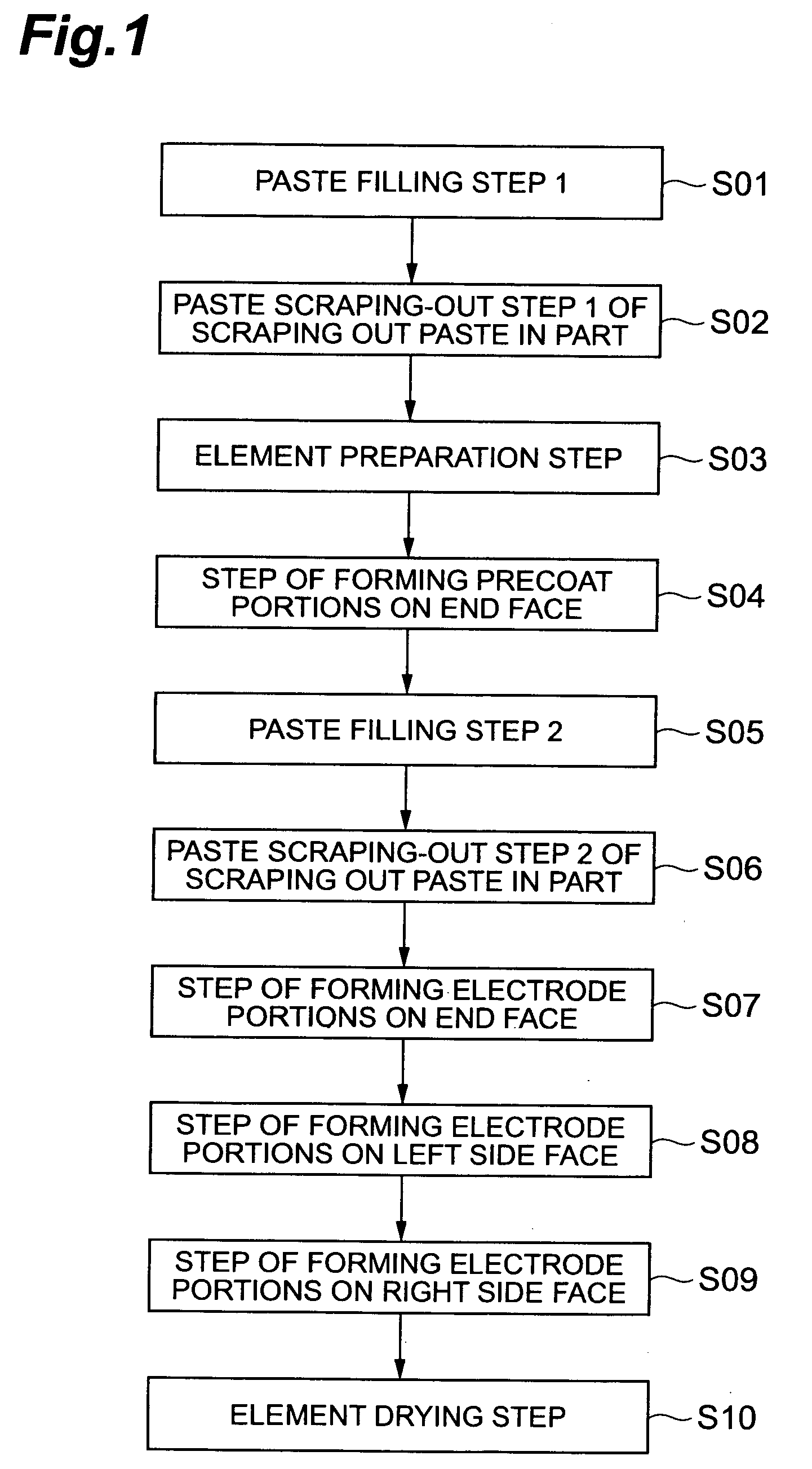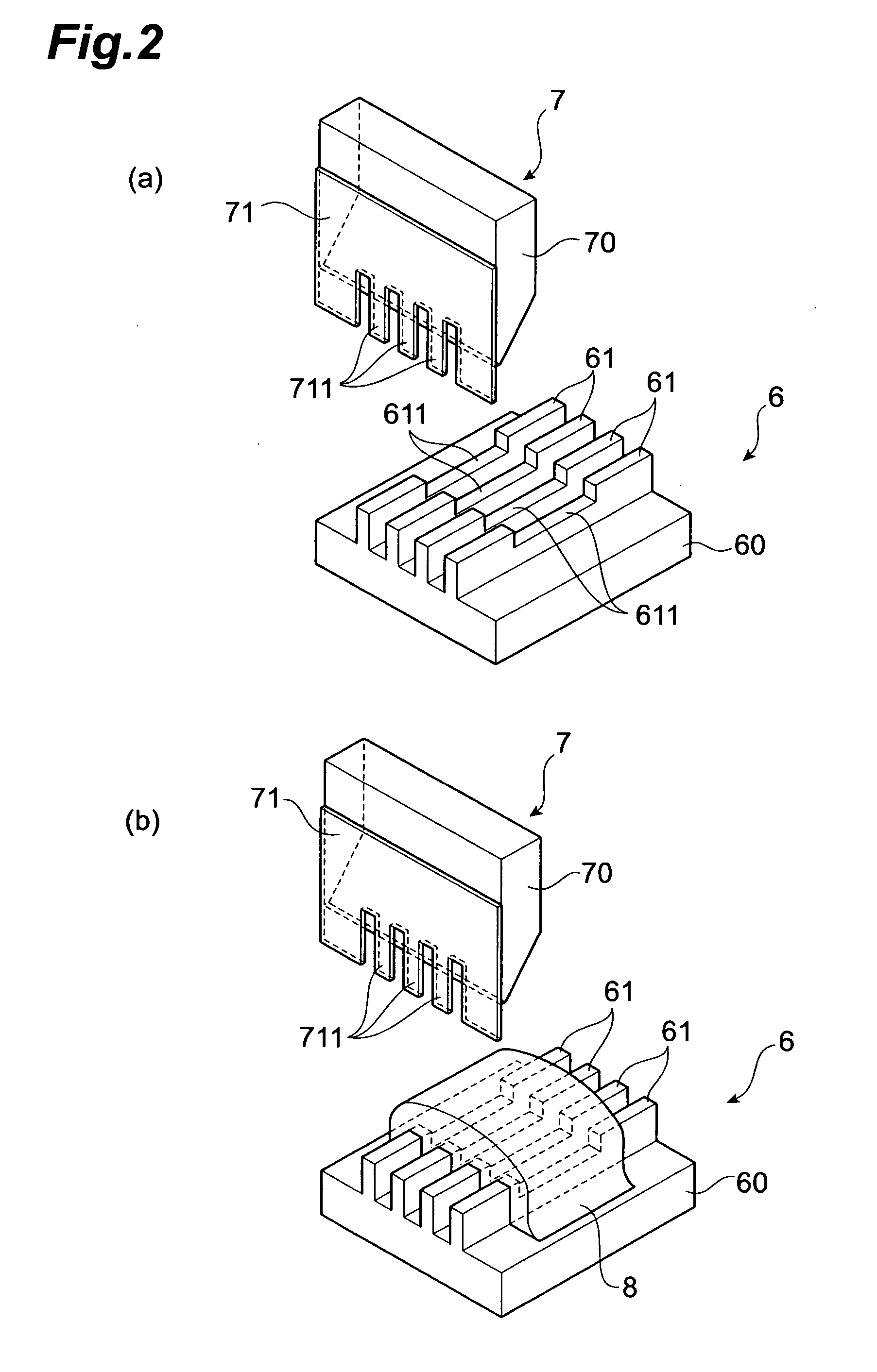External electrode forming method
- Summary
- Abstract
- Description
- Claims
- Application Information
AI Technical Summary
Benefits of technology
Problems solved by technology
Method used
Image
Examples
Embodiment Construction
[0025] The expertise of the invention can be readily understood in view of the following detailed description with reference to the accompanying drawings presented by way of illustration only. Subsequently, an embodiment of the present invention will be described with reference to the accompanying drawings. The same portions will be denoted by the same reference symbols as much as possible, without redundant description.
[0026] An external electrode forming method, which is an embodiment of the present inventions will be described. The external electrode forming method of the present embodiment is outlined as follows. First, an application bed (jig) with grooves is prepared, and a conductive paste is attached along wall faces and bottom faces of the grooves. Thereafter, a chip (element) is put into the grooves and moved vertically and horizontally to form external electrodes on an end face (third face) and on two side faces (first face and second face) of the chip. Subsequently, the...
PUM
| Property | Measurement | Unit |
|---|---|---|
| Electrical conductor | aaaaa | aaaaa |
Abstract
Description
Claims
Application Information
 Login to View More
Login to View More - R&D
- Intellectual Property
- Life Sciences
- Materials
- Tech Scout
- Unparalleled Data Quality
- Higher Quality Content
- 60% Fewer Hallucinations
Browse by: Latest US Patents, China's latest patents, Technical Efficacy Thesaurus, Application Domain, Technology Topic, Popular Technical Reports.
© 2025 PatSnap. All rights reserved.Legal|Privacy policy|Modern Slavery Act Transparency Statement|Sitemap|About US| Contact US: help@patsnap.com



